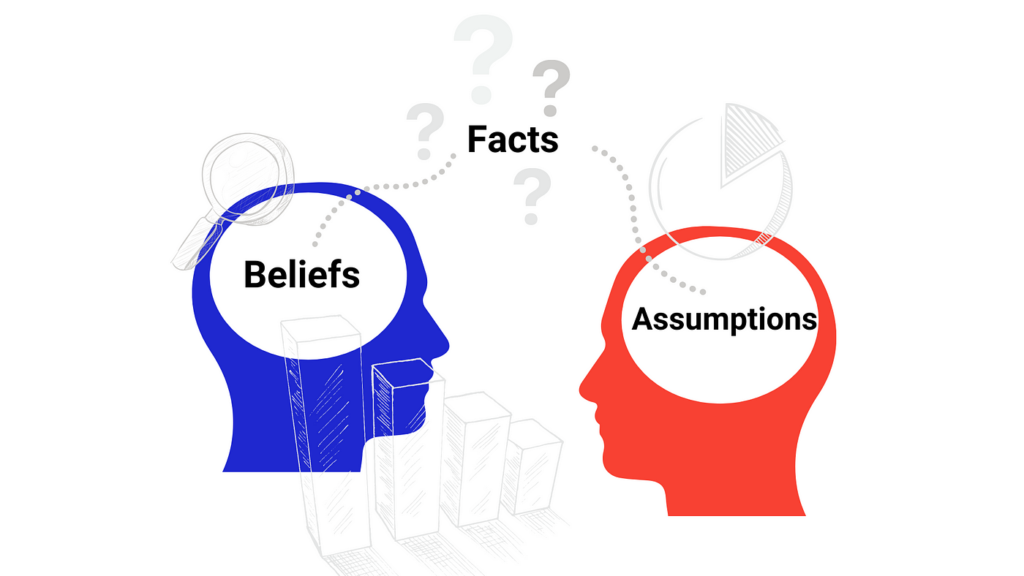Have you ever noticed how certain websites or apps seem to guide your actions in a particular direction? Or maybe you’ve found yourself drawn to a product simply because of its design. These are all examples of cognitive biases at play in UX design. Understanding these biases is crucial for creating effective and user-friendly digital experiences that truly resonate with your audience. In this article, we’ll explore the different types of cognitive biases in UX design, their importance, and how you can use them to create engaging designs.
What is cognitive bias?
Cognitive bias refers to the systematic errors or deviations from rational judgment that occur due to our underlying thought processes and experiences. Our brains rely on shortcuts, assumptions, and heuristics to process information quickly. While these mental shortcuts can be helpful in many situations, they can also lead us astray when it comes to decision-making.
In UX design, cognitive biases come into play when we make decisions about how users will interact with our products. For example, confirmation bias may cause designers to seek out evidence that confirms their assumptions about user behavior while ignoring contradictory data.
Another common type of cognitive bias is the framing effect which involves how information is presented influencing our perception of it. This means presenting options in a certain way could influence which option a user selects.
As UX designers, it’s important for us to recognize these biases so we can avoid them and create better designs that truly meet the needs of our target audience.
Different types of cognitive biases in UX design
Cognitive biases are inherent tendencies that affect human judgment and decision-making. In UX design, cognitive biases can impact the way users interact with digital products and services. There are several types of cognitive biases that designers should be aware of when creating user interfaces.
- One common type of bias is confirmation bias, which occurs when people seek out information that confirms their existing beliefs or assumptions while ignoring evidence to the contrary. In UX design, this can lead to interfaces that reinforce existing user behavior rather than challenging it.
- Another type of bias is anchoring bias, which happens when people rely too heavily on the first piece of information they encounter when making a decision. This can result in UIs that prioritize certain elements over others based solely on their initial placement or prominence.
- Availability bias occurs when people make judgments based on readily available information rather than taking into account all relevant factors. This often leads to designs that emphasize popular features at the expense of less well-known ones.
- Choice-Supportive Bias occurs when people justify their choices and overlook the negatives of what they’ve chosen. This is the reason why users often stay loyal to products they are used to, even if there are potentially better alternatives.
- People prefer things that are familiar to them. The more a user encounters a certain design or feature, the more likely they are to prefer and interact with it. This is why many websites and apps have similar layouts and use similar icons. This bias known as Familiarity Bias (Mere Exposure Effect)
- Hick’s Law, while not technically a cognitive bias, this principle plays a big role in UX design. It states that the time it takes for a person to make a decision increases with the number and complexity of choices. Simplifying choice options can significantly improve the user experience by making it easier for users to make decisions.
Understanding different types of cognitive biases in UX design is crucial for creating effective and engaging user experiences. By designing with these tendencies in mind, designers can create interfaces that are more intuitive and better suited to users’ needs and preferences.

Why are cognitive biases important in the UX design
Cognitive biases are important in UX design because they can affect the user’s perception and decision-making. When designing a product, it is essential to keep in mind how cognitive biases may influence users’ behavior and actions.
One of the most significant reasons why understanding cognitive bias is important is that it helps designers identify potential usability issues before they become problems. For example, if a designer knows that users tend to overestimate their abilities when completing a task, they can create an interface that guides them towards success without being too obvious.
Another reason why cognitive biases are relevant in UX design is that they help designers develop empathy for their users. By understanding how people see things differently based on various factors such as culture, education or experience, designers can better tailor interfaces to meet diverse needs.
Moreover, recognizing the impact of cognitive bias allows designers to make informed choices about which features should be included and which ones need to be removed from the product’s interface. This helps reduce clutter while ensuring that critical functions remain accessible and easy-to-use.
Ultimately, by considering cognitive biases during the design process, companies can create products with more intuitive interfaces while improving overall user satisfaction.
Designing with cognitive bias in mind
When designing a product or service, it’s important to consider the various cognitive biases that may impact user behavior. One way to do this is by adopting a user-centered design approach and conducting thorough research on your target audience’s needs, preferences, and behaviors.
It’s also essential to avoid relying solely on assumptions and instead seek out feedback from real users throughout the design process. This can help identify potential biases in your approach and allow for adjustments before release.
In addition, designers should aim to create interfaces that are intuitive and easy to use while minimizing options for decision-making processes as much as possible. This helps reduce the likelihood of users falling victim to confirmation bias or other forms of cognitive bias.
Color choices, typography, layout, and content organization can also have an impact on how users perceive information when interacting with a product or service. Designers must be mindful of these factors when creating interfaces that facilitate clear communication without overwhelming users with too much information at once.
Ultimately, designing with cognitive bias in mind requires empathy towards end-users combined with careful consideration of human psychology principles within UX design practices.
Tools to avoid cognitive bias in UX design
There are several tools that UX designers can use to avoid cognitive biases in their designs. One such tool is user testing, which involves observing and analyzing how users interact with the product or service. This helps identify any biases that may have been unintentionally incorporated into the design.
Another tool for avoiding cognitive bias is conducting surveys and collecting feedback from users. By gathering quantitative data, UX designers can gain valuable insights into user preferences and behaviors, helping them create more effective designs.
Design thinking is also a powerful tool for reducing cognitive bias in UX design. This approach emphasizes empathy and collaboration, encouraging designers to think creatively about solutions that meet both business goals and user needs.
Using personas can help reduce cognitive bias by creating fictional representations of different types of users. These personas serve as a reference point throughout the design process, helping ensure that all decisions are made with the end-user in mind.
By utilizing these tools – user testing, surveys/feedback collection, design thinking, and personas – UX designers can greatly improve their ability to create designs free from cognitive biases.
Conclusion
Cognitive bias is a powerful force in UX design that can greatly impact user experience. It’s important for designers to understand the different types of cognitive biases and how they can affect their designs. By designing with these biases in mind and using tools to avoid them, designers can create more effective user experiences.
Cognitive bias shouldn’t be seen as a negative aspect of UX design, but rather an opportunity to better understand users and tailor designs specifically for them. By acknowledging and addressing these biases head-on, designers can create experiences that are not only intuitive but also enjoyable.
So next time you’re working on a UX design project, remember the power of cognitive bias and its impact on your work. With a little bit of awareness and effort, you’ll be able to craft truly exceptional experiences that put your users first.
Recommended reading
For further insights into avoiding cognitive biases in UX design, we recommend the following article:
Important Notice: The articles, insights, and opinions I express here on UX Parrot are solely my own, arising from my personal journey in the UX industry. They do not represent or affiliate with the views or stances of any organization I’ve been associated with in my professional capacity, past or present. Sina Ranjbar.



